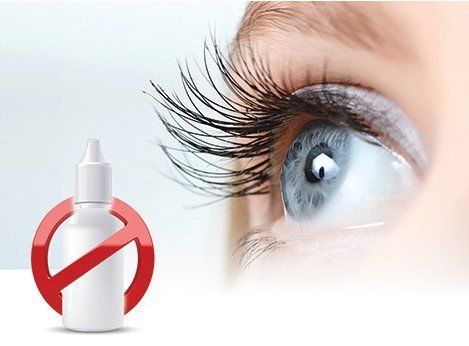DROPLESS Cataract Surgery
Benefits of Dropless Cataract Surgery
Dropless cataract surgery:
- Eliminates the need for drops
- Saves you between $150-$300 on prescription eye drops
- Has a low risk of infection and retinal swelling
- Makes the postoperative regimen simpler
Choosing dropless cataract surgery means that you will not have to be burdened by a detailed eye drop schedule, and your doctor will not have to worry about whether you have administered drops correctly.
Eye drops can be hard for some patients to put into their eyes. After cataract surgery, there are two main issues we are trying to control: Preventing infection and controlling inflammation. Traditionally, we prescribed antibiotic eye drops to prevent infection, as well as steroid eye drops to control post-operative inflammation. Now we have some alternatives to using eye drops after surgery.
There are some antibiotic solutions we can place inside the eye at the end of the cataract surgery that have been shown in most studies to do as good or better a job preventing infection as using antibiotic eye drops before and after surgery.
The FDA approved a new steroid delivery method to reduce post-operative inflammation that have the
potential to eliminate post-op steroid eye drops in most (but not all) patients who are undergoing cataract surgery. This product is called Dextenza.
Dextenza is a white pellet that is inserted into the lower punctum of the lid, which is the small opening for the drainage of tears. This insert is designed to deliver medication for up to 30 days. It is slowly resorbed and doesn't need to be removed. Similarly, it is usually not visible and does not cause any discomfort.
Another way to reduce postoperative drop burden is by implementing various intracameral agents at
the time of cataract surgery. Intracameral phenylephrine 1% and ketorolac 0.3% solution (Omidria) is used by many surgeons intraoperatively and has been shown to not only prevent intraoperative miosis, but also reduce postoperative ocular pain and cystoid macular edema. With this intraoperative
medication, some surgeons have eliminated topical steroids and NSAIDs from their postoperative regimen altogether.
Intracameral antibiotics have also changed the landscape for the use of postoperative antimicrobial
drops. Moxifloxacin, for example, can be injected intracamerally at the end of a cataract procedure as
opposed to using a topical antibiotic drop.
Compounded formulations of combination of a steroid
(triamcinolone) and antibiotic (moxifloxacin)are also available, which can be injected intracamerally. As
a result, surgeons can thereby eliminate both topical antibiotic and steroid drops from their
postoperative regimens.
If you have the Dextenza implant placed and an antibiotic medication is injected inside the eye after
surgery, then you may be drop free after surgery.
There is a chance that in your particular case there
may still be too much inflammation and you might need to take eye drops for a while, but the majority
of the time you would not need drops.
If you are going to have cataract surgery and would like to be drop free after the procedure, then ask your surgeon if you would be a candidate for either the Dextenza implant or TriMoxi.

Have Questions?
We will get back to you as soon as possible.
Please try again later.
OUR ADDRESS
HOURS
HOURS
CONTACT US


Share On: